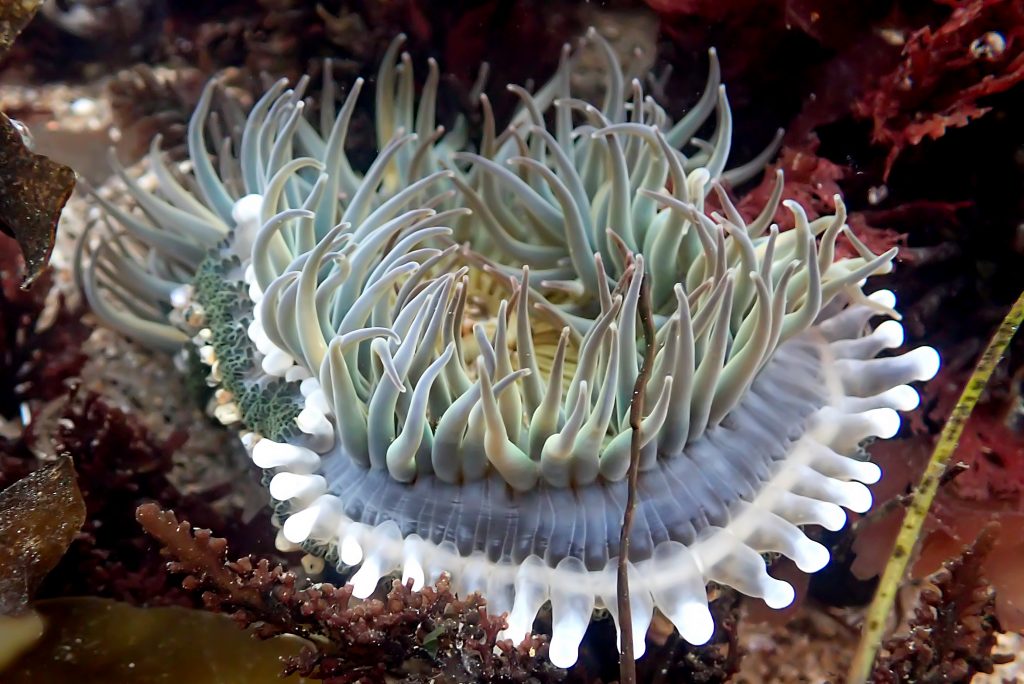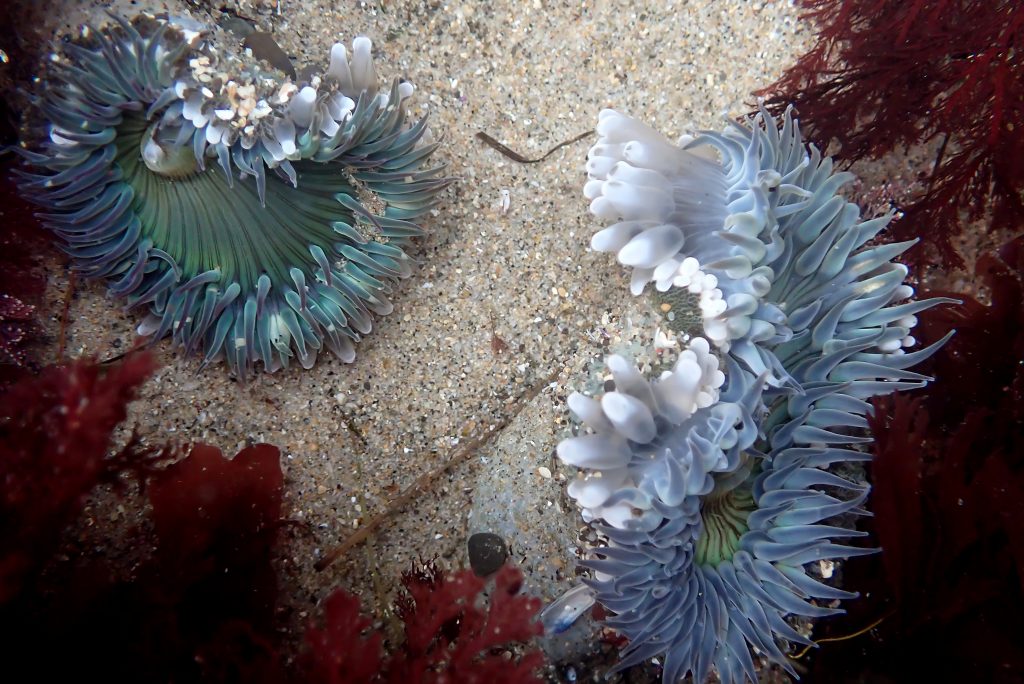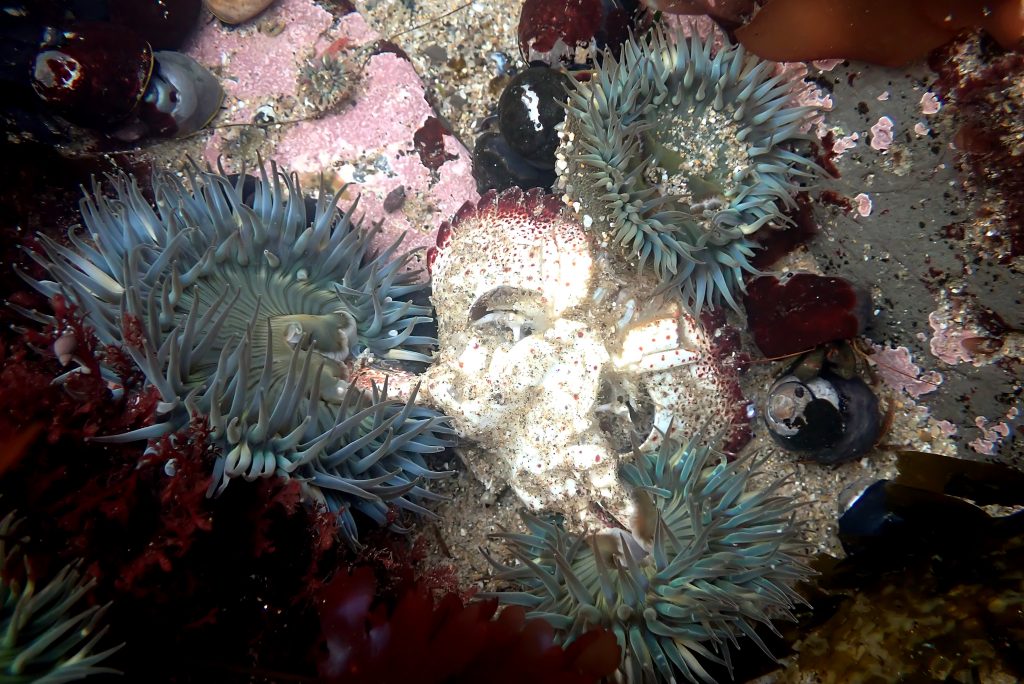For some reason, many of the sunburst anemones (Anthopleura sola) in a certain area at Davenport Landing were geared up for a fight. I don’t know what was going on before I got there yesterday morning, but something got these flowers all riled up. We think of them as being placid animals, but that’s only because they operate at different time scales than we are used to. A paradox about cnidarians is that they don’t do anything quickly except fire off their stinging cells; that, however, they do with the fastest known cellular mechanism in the animal kingdom. Go figure.

2021-06-27
© Allison J. Gong
What looks like an anemone wearing a tutu is actually an anemone ready to fight. The normal filiform feeding tentacles are easily recognized. But those club-shaped white tentacles below the ring of feeding tentacles are called acrorhagi. They are all about fighting. The tips are loaded with potent cnidocytes that usually aren’t used to catch food. They are used to fight off other anemones, and possibly predators.
Here’s another shot of the same animal, which shows how the feeding tentacles and acrorhagi are arranged in concentric rings:

2021-06-27
© Allison J. Gong
So who would this anemone be fighting? This individual was the only one of its kind in the pool where it lives. I don’t know why its acrorhagi are inflated. I suppose they could be used to fend off a would-be predator, but I didn’t see any other animal in the pool that seemed a likely candidate.
But look at this duo:

2021-06-27
© Allison J. Gong
Now, clearly there is (or had been) something going on between these individuals. They both have their acrorhagi inflated. I’ve been looking at this photo for a while and can’t decide which is the aggressor. At first I assumed that the anemone on the right had initiated an attack on the other. But now I wonder if that is a defensive posture rather than an offensive one. That animal does seem to be more bent out of shape than the one on the left.
I’ve seen anemone fights before, and I’ve also seen anemones living side by side, tentacles touching, in apparently perfect amity. It’s very clear that they can coexist peacefully. Why, then, do they sometimes choose to fight? It’s important to point out that Anthopleura sola is an aclonal species. Unlike its congener A. elegantissima, whose primary mode of growth is cloning, each A. sola represents a unique genotype. With these anemones, whether or not two individuals fight is not determined by relatedness.
In a different pool these two anemones are sharing the carcass of a rock crab.

2021-06-27
© Allison J. Gong
Maybe that third anemone at the top had also taken part in the feast, but at this point it seemed to be minding its own business. Given the demonstrated aggression of some A. sola, it would be interesting to know whether or not this trio ever fight amongst themselves. When we ‘ooh’ and ‘aah’ over them in the tidepools they look like passive flowers, and we forget that they are active predators. But we humans have access to the anemones’ home for only a few hours every month, and I have no doubt that they get up to all sorts of shenanigans when we’re not looking.

Outstanding photos! Behavior I have not seen before. Thank you.
You’re very welcome, Ken. I’m glad you liked it!
This was SO much fun to read! I had no idea there were aggressive anemones out there.
You wouldn’t think of them fighting when you them sitting there in the tidepools, would you? I’m glad you enjoyed the post!